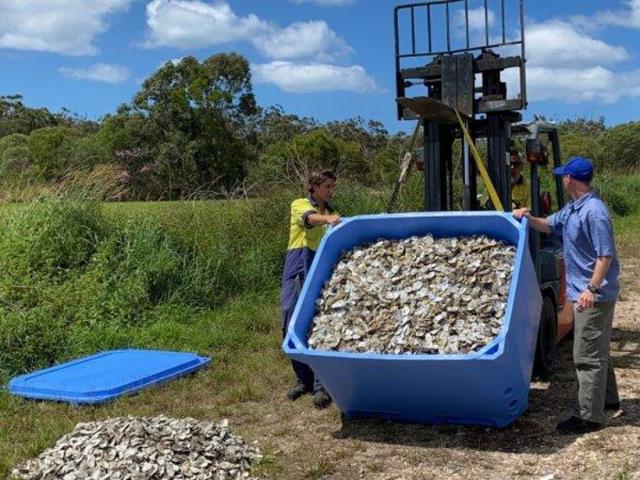Council will negotiate an extension of its partnership with The Nature Conservancy (TNC) to allow State Permits to be finalised and reef restoration work to begin.
Council’s Ordinary Meeting on Thursday authorised the chief executive officer to negotiate the extension of the three-year alliance agreement due to end in September this year.
Deputy Mayor Frank Wilkie said project progress, measured against deliverable targets and publicly reported in three six-monthly and three annual reports, had noted delays in gaining the permits needed from the State Government.
“Although TNC is involved in 11 reef restoration projects around Australia, the Noosa River oyster restoration project is breaking new ground for aquatic restoration in Australia as there are no similar other permanent restoration projects underway in waterways similar to Noosa River.”
Cr Wilkie said the $3.6 million project which had attracted $2.4 million in external funding from TNC and the Federal Government’s Reef Builder program, was among 60 TNC intended completing around Australia.
“This evidence and science-based collaboration involves our traditional owners, all three levels of government, a world leading conservation organisation, local businesses, community groups, philanthropic contributions, universities, recreational fishing group Ozfish and the Bribie Island Research Centre,” Cr Wilkie said.
“Just as forests clean the air and provide habitat for land-based animals, oyster reefs clarify the water and provide habitat for marine creatures, improving water quality, enriching marine biodiversity.
“Prior to extending, Council will revisit how any risks associated with the project are mitigated and incorporated into the key performance indicators to provide additional checks, balances and accountability.
“The Queensland Government has since issued an Owner’s Consent Approval to allow the council assessment of works in the river and a General Fisheries Permit for oyster handling.
“TNC has been approved as a Registered Resource Provider and has been working with local business to re-use, clean and cure oyster shells. TNC has also obtained necessary Fisheries Permits.
“TNC is still awaiting Resource Allocation Authority (RAA) from the Department of Agriculture and Fisheries (DAF) to establish the reefs in the river bed, but this approval is expected shortly,” he said.
“TNC has had to provide sophisticated restoration and site management plans, detailed risk assessments, and multiple regulatory code and environmental assessments.
“The State has also requested ecological mapping and site engineering, as well as multiple contingency measures for the construction and site management aspects of the project. This information has all been completed.”
The Nature Conservancy is a world-leading conservation organisation, having worked on evidence and science-based projects in more than 70 countries.
Council’s Environmental Services Manager Shaun Walsh said oysters were an important part of a healthy aquatic ecosystem, providing habitat and a rich food source for fish and other marine life.
“Dr Ruth Thurstan’s 2015 historical study confirmed a dramatic decline in oysters and fish stocks in the Noosa River over many years,” he said.
“A hectare of rebuilt oyster reef will filter 2.7 billion litres of water annually, remove 166 kilograms of nutrient pollution and also produce 375 kilograms of new fish so there is no doubt as to the important role they play in supporting healthy aquatic ecosystems.“






